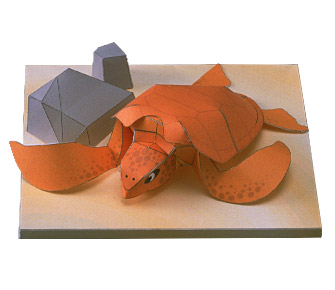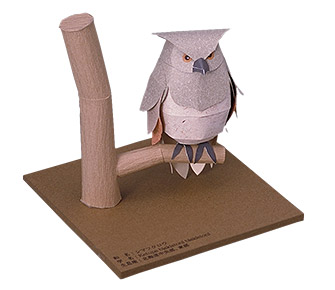Hondo Stoat
Papercraft kit : The hondo stoat, commonly known as the
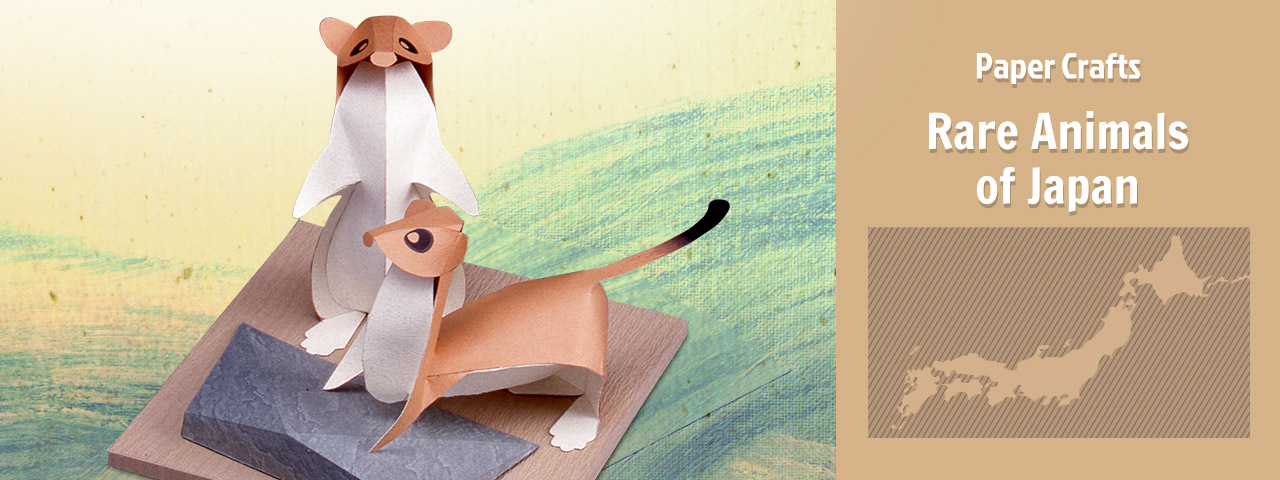
“Hondo Stoat” belonging to the weasel family, is a carnivorous mammal that inhabits alpine zones from the Chubu, central region of Japan, northward to Aomori Prefecture in Honshu, the main island of Japan. It is lovingly nicknamed “Mountain Fairy,” for its cute appearance, but it is a rare animal classified as, “Near Threatened [NT]” in the Red List.
Two types of paper crafts corresponding to the actual seasonal pelage changes of the Hondo Stoat during the summer and winter can be enjoyed at this web site in the form of downloadable photo images.
There is also a photo of an uncolored Hondo Stoat available for downloading which preserves the unique texture of the paper.
Download - Parts sheet & InstructionsThis data was released in April, 1999.

- Parts sheets
[ Color version - During summer ] - Photo of realistically colored paper sculpture.(PDF 99.0KB)

- Parts sheets
[ Color version - During winter ] - Photo of realistically colored paper sculpture.(PDF 94.3KB)

- Parts sheets
[ White version ] - Uncolored sculpture with special texture.(PDF 86.2KB)

- Assembly Instructions
- Assembly instructions for the paper sculptures.(PDF 260.3KB)
Hondo Stoat - Animal Guide
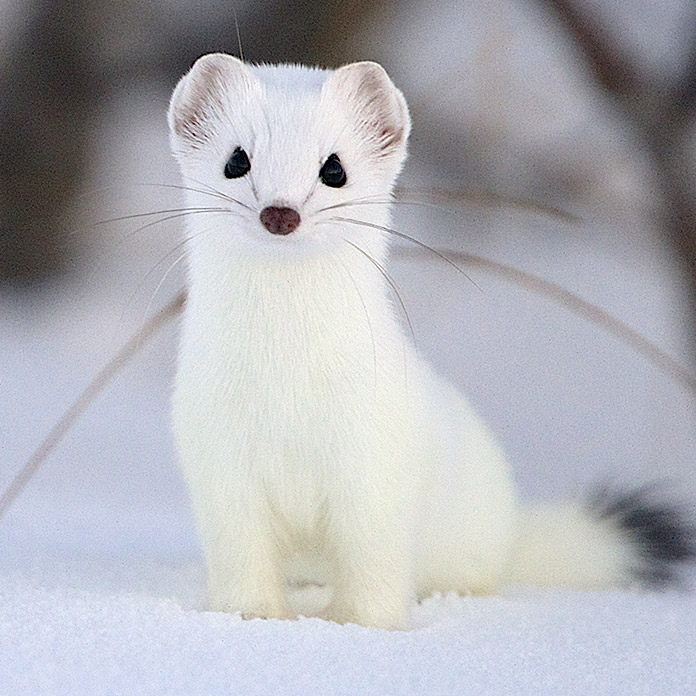
- Hondo Stoat - Mustelidae
- Mustela Erminea Nippon
- 17 to 30 cm (6.8 to 12 in.) in length
- RED DATA BOOK (RDB) categories : Near Threatened [NT]
The Stoat, an ermine, is a small mammal belonging to the weasel family. The Hondo Stoat (Mustela Erminea Nippon), particularly found in Honshu, is an Asian species of the ermine family abundantly inhabiting Northern Eurasia and North America. The Stoat is also called Yama-Itachi or Kuda-Gitsune in Japan. Another subspecies, Ezo-Stoat (Mustela erminea orientalis), inhabits Hokkaido, the northern island of Japan, and is classified as a "Near Threatened(NT)" animal in the Red Data Book.
The Stoat feeds mainly on mice, rats, birds' eggs, and insects. In spite of its lovable appearance, the Stoat has a rather aggressive nature and sometimes attacks hares, which are many times larger than itself.
The Stoat is characterized by its change of pelage color. Its brown mask and back, maintained from early spring to summer, is replaced by a snow-white coat during the winter season. However, the tip of its tail remains black throughout the year.
The only difference between the Hondo Stoat and the Ezo Stoat is that the former is smaller than the latter. Hondo Stoat males average 18 to 24 centimeters (7.2 to 9.6 in.) and females 14 to 23 centimeters (5.6 to 9.2 in.) long, while the Ezo Stoat grows to 30 centimeters (12 in.) or more in length.

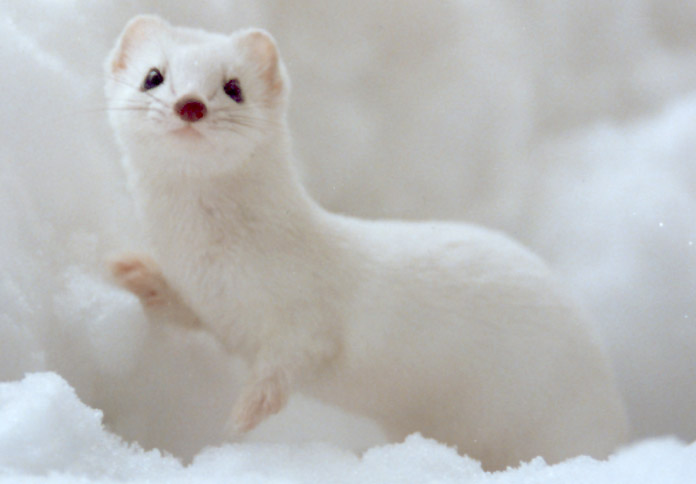
Photographed by Terunori Nishizawa
Habitat
The habitat of the Hondo Stoat ranges from alpine zones in the central Honshu region, northward to Aomori Prefecture. Although the Hondo Stoat seldom shows itself to people, a rare glimpse of the animal standing on its hind legs looking around may be seen in forests or highlands in mountainous regions. The Hondo Stoat is designated as a natural treasure in Nagano Prefecture. In the area of Shiga Heights, it is especially well cared for and affectionately nicknamed "Mountain Fairy" as a symbol of good fortune, because of its cute appearance.
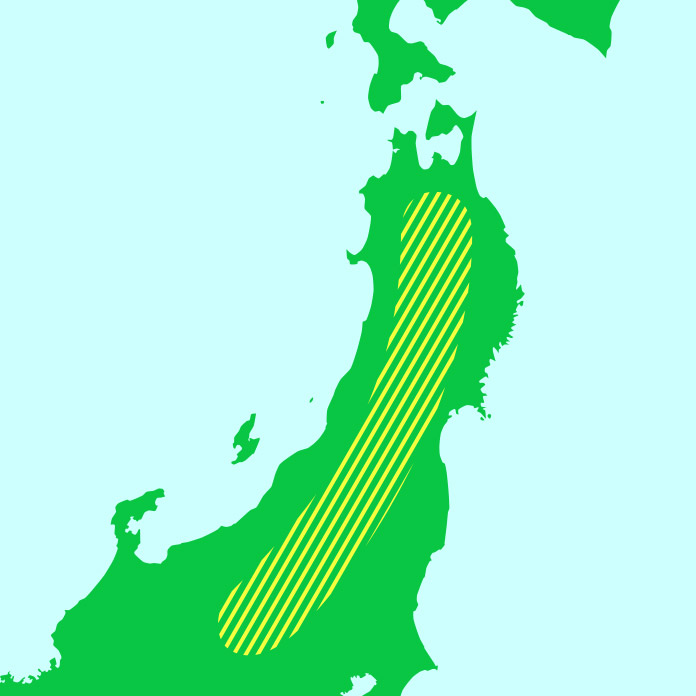
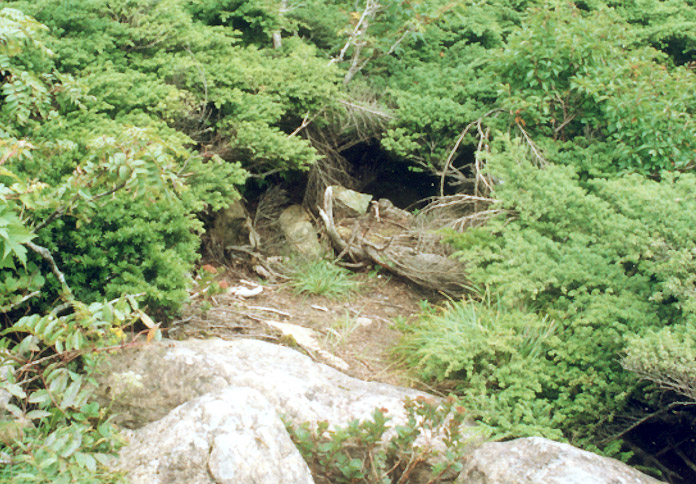
Mt. Hayachimine, Iwate Prefecture
About RED DATA BOOK
The Red Data Book is a report compiled by the Environment Agency classifying various threatened animals in Japan and their present status. From a biological viewpoint, the Environment Agency has evaluated the extinction risk level of each individual taxon and compiled a list for the Red Data Book. However, the Book possesses no legal power to enforce regulations concerning threatened species.
The Red Data Book is broadly employed as fundamental information for advancing the preservation of threatened wild animals.
| EXTINCT | EX | A taxon considered to have become extinct in Japan. |
|---|---|---|
| EXTINCT IN THE WILD | EW | A taxon known to survive only under conservation or in captivity. |
| CRITICALLY ENDANGERED | CR | A taxon facing an extremely high risk of extinction in the wild in the immediate future. |
| ENDANGERED | EN | A taxon facing a very high risk of extinction in the wild in the near future though not critically endangered. |
| VULNERABLE | VU | A taxon facing a high risk of extinction in the wild in the medium-term future though not critically endangered or endangered. |
| NEAR THREATENED | NT | A taxon which can qualify for VULNERABLE in the future depending on its habitat conditions, although it is not facing a high risk of extinction at this present stage. |
| DATA DEFFICIENT | DD | A taxon about which there is not adequate information to make a direct, or indirect, assessment of its risk of extinction. |
| THREATENED LOCAL POPULATION | LP | A taxon facing a high risk of extinction in a certain locality among its limited specific habitats. |
From Environment Agency press materials


